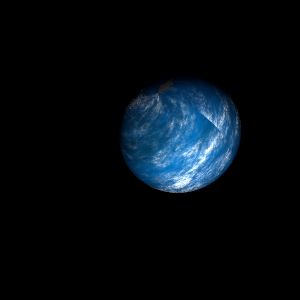|
|
Space Astro
|
Info for exoplanet "Remeuq"
| Scientific (actual) data |
|---|
| Planet | Kepler-241 c |
| Planet status | Confirmed |
| Radius | 0.229 |
| Orbital period | 36.066 |
| Semi major axis | 0.189 |
| Discovered | 2014 |
| Updated | 2021-02-05 |
| Tconj | 2455030 |
| Impact parameter | 0.07 |
| Publication | Announced on a website |
| Detection type | Primary Transit |
| Alternate names | 2MASS J19313914+4103393 c, K00842.02, KIC 5794379 c, KOI-842 c, KOI-842.02, WISE J193139.14+410339.5 c |
| Star name | Kepler-241 |
| Right ascension | 292.91° |
| Declination | 41.06° |
| Mag j | 13.608 |
| Mag h | 13.064 |
| Mag k | 12.881 |
| Star distance | 609.86 |
| Star metallicity | -0.243 |
| Star radius | 0.67 |
| Star temperature | 4699 |
| Star alternate names | 2MASS J19313914+4103393, KIC 5794379, KOI-842, WISE J193139.14+410339.5 |
| Wikipedia article | Kepler-241 c |
Back
| |
| Fictional info (?) |
|---|
| Suggested name | Remeuq |
| Planet type | Cold planet |
| It is the second-brightest natural object in the night sky after Atsponny-iso, reaching an apparent magnitude of -5 - bright enough to cast shadows at night and, sometimes, visible to the naked eye in broad daylight.
It is a cold planet planet with a mass one-thousandth that of Kepler-241, but two-and-a-half times that of all the other planets in its solar system combined. When viewed from Atsponny-iso, Remeuq can reach an apparent magnitude of -3, bright enough for its reflected light to cast shadows, and making it on average the third-brightest object in the night sky. This cold planet is named after the deity Remeuq, the spirit of the underworld.
Plans have been proposed for rovers or more complex missions, but they are hindered by Remeuq's strong magnetosphere.
Remeuq has been explored on several occasions by robotic spacecraft, most notably during the early Pioneer and Frontier flyby missions and later by the Isaac orbiter.
This planet is crowded with small primordial humanoids known to spend their life close to volcanos by seeking the Franras-qeq during the day. The Apusmedeia Si are somewhat related to the Moontheus but with 5 arms and vary in size from 40 to 80 mm. The Apusmedeia Si are known to survive temperatures from 130 to 180°C and even the high radiation level which is common near the poles. |
| Estimated population | 15000000000 |
| Atmosphere | Water | 49% |
| Methane | 25% |
| Oxygen | 25% |
| Carbon dioxide | 0.07% |
| Atmospheric pressure | 80 bar |
 |
| Moon | Laris Ietnoe | Small round rocky comet |
| Theus'ti | Small almost round rocky comet |
| Mekivi-ditada-ke | Medium-sized potato shaped oceanic moon |
| Calcali Cli | Medium-sized slightly egg-shaped ice asteroid |
| Tokeste | Medium-sized irregular rocky moon |
| Lenexi-har | Small potato shaped rocky asteroid |
| Epifari'fer | Medium-sized round gaseous moon |
| Depros Naiadal | Very small almost round ice moon |
| Heleti Siar | Medium-sized potato shaped gaseous asteroid |
| Sixi | Small slightly egg-shaped rocky planetoid |
| Nereda Naqmal Tania | Small potato shaped rocky asteroid |
| Aoce Listan Her | Large round oceanic moon |
| Ophecha | Medium-sized slightly egg-shaped gaseous comet |
| Phoforn | Medium-sized round gaseous planetoid |
| Apus-ebepid | Large almost round oceanic asteroid |
| Teus-aocar-halene | Very small round rocky planetoid |
| Bestlao Ertur | Small round ice moon |
| Arielko Theaait | Medium-sized round oceanic comet |
| Narmi Tungr | Very small almost round oceanic comet |
| Cali Ae | Medium-sized round rocky comet |
| Liaqpa-cunaq | Medium-sized almost round rocky moon |
| Pemedeia Thys | Medium-sized potato shaped oceanic moon |
| Lipsaorix-lyraq | Large slightly egg-shaped crater-filled comet |
| Farsao | Medium-sized almost round oceanic moon |
| Keban Teus | Small round rocky asteroid |
| Midemir'lirr | Very small round rocky moon |
| Qeqlyke Kopahyr | Medium-sized potato shaped ice moon |
| Google search for Remeuq |
|
Website by Joachim Michaelis
|
|
|
|